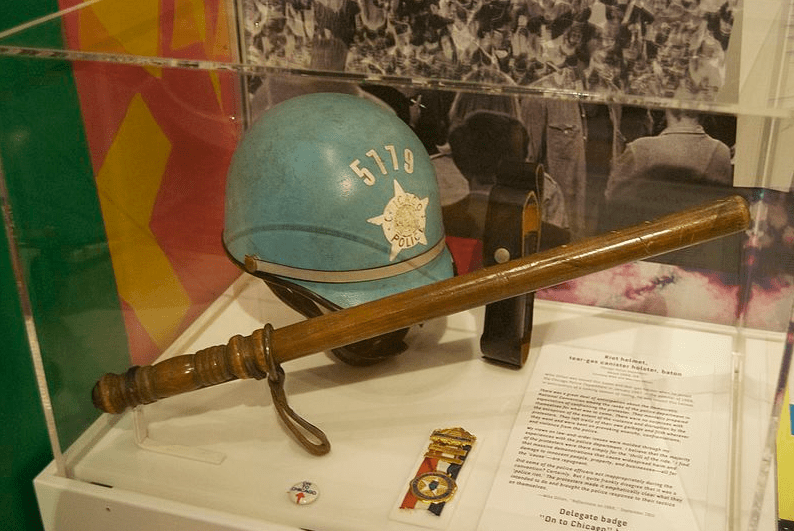NOTE: This information is not provided as legal advice. Always consult a lawyer and seek legal guidance.
Maine Revised Statutes Title 25. Internal Security and Public Safety § 2001-A. Threatening display of or carrying concealed weapon
1. Display or carrying prohibited. A person may not, unless excepted by a provision of law:
A. Display in a threatening manner a firearm, slungshot, knuckles, bowie knife, dirk, stiletto or other dangerous or deadly weapon usually employed in the attack on or defense of a person; or
B. Wear under the person’s clothes or conceal about the person’s person a firearm, slungshot, knuckles, bowie knife, dirk, stiletto or other dangerous or deadly weapon usually employed in the attack on or defense of a person.
2. Exceptions. The provisions of this section concerning the carrying of concealed weapons do not apply to:
A. A handgun carried by a person to whom a valid permit to carry a concealed handgun has been issued as provided in this chapter;
A-1. A handgun carried by a person who is 21 years of age or older and is not otherwise prohibited from carrying a firearm or is 18 years of age or older and under 21 years of age and is on active duty in the Armed Forces of the United States or the National Guard or is an honorably discharged veteran of the Armed Forces of the United States or the National Guard and is not otherwise prohibited from carrying a firearm;
B. Disabling chemicals as described in Title 17-A, section 1002;
C. Knives used to hunt, fish or trap as defined in Title 12, section 10001;
D. A handgun carried by a law enforcement officer, a corrections officer or a corrections supervisor as permitted in writing by the officer’s or supervisor’s employer;
E. A firearm carried by a person engaged in conduct for which a state-issued hunting or trapping license is required and possessing the required license, or a firearm carried by a resident person engaged in conduct expressly authorized by Title 12, section 11108 and section 12202, subsection 1. This paragraph does not authorize or permit the carrying of a concealed or loaded firearm in a motor vehicle;
F. A handgun carried by a person to whom a valid permit to carry a concealed handgun has been issued by that person’s state of residence if that person’s state of residence honors a permit to carry a concealed handgun issued under this chapter;
G. A handgun carried by an authorized federal, state or local law enforcement officer in the performance of the officer’s official duties;
H. A handgun carried by a qualified law enforcement officer pursuant to 18 United States Code, Section 926B . The qualified law enforcement officer must have in the law enforcement officer’s possession photographic identification issued by the law enforcement agency by which the person is employed as a law enforcement officer; and
I. A handgun carried by a qualified retired law enforcement officer pursuant to 18 United States Code, Section 926C . The qualified retired law enforcement officer must have in the retired law enforcement officer’s possession:
(1) Photographic identification issued by the law enforcement agency from which the person retired from service as a law enforcement officer that indicates that the person has, not less recently than one year before the date the person carries the concealed handgun, been tested or otherwise found by that agency to meet the standards established by that agency for training and qualification for an active law enforcement officer to carry a handgun of the same type as the concealed handgun; or
(2) Photographic identification issued by the law enforcement agency from which the person retired from service as a law enforcement officer and a certification issued by the state in which the person resides that indicates that the person has, not less recently than one year before the date the person carries the concealed handgun, been tested or otherwise found by that state to meet the standards established by that state for training and qualification for an active law enforcement officer to carry a handgun of the same type as the concealed handgun.
Summary:
Although this particular part of this stature in Maine doesn’t explicitly mention an expandable baton or a club, billy, blackjack, bludgeon, truncheon, bat, nightstick or any other similar weapon, Section 1, Subsection A implies that the phrase “other dangerous or deadly weapon” may mean any other instrument which can be capable of causing death or serious injury (and in this case, it can include an expandable baton and other similar weapons).
A person cannot carry a deadly weapon, either on display or concealed, except for certain conditions mentioned above.
To be more certain or specific though, if you would like to know if it is permissible to carry or possess a collapsible or expandable baton in Maine – whether openly or in a concealed manner – it is best to consult your lawyer and/or local law enforcement regarding this matter.

